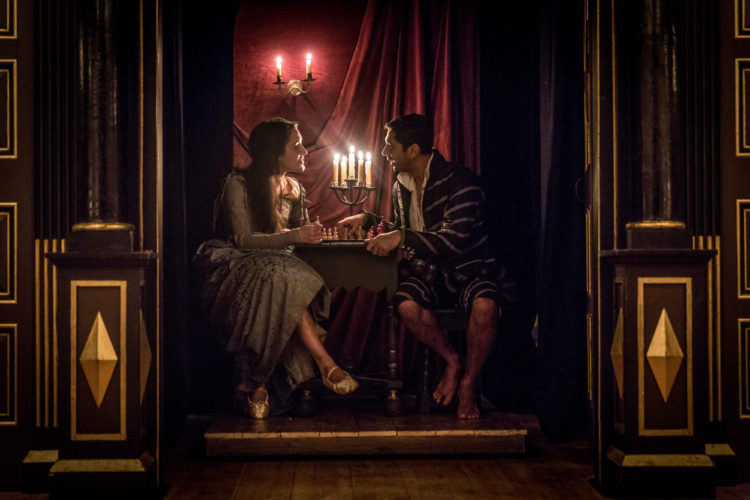Curtains played a crucial role in structuring a segment of the action as a scene of discovery, often separating out the ‘tiring house’ or the inset space at the back of the stage from the main stage, and at other times framing beds or stage-windows: the hiddenness, or secrecy, or intimacy of certain actions could be foregrounded by being located behind curtains, and by being initially inaccessible and subsequently revealed.
The discovery space could thus enable the performance of privacy (or its violation through voyeurism or spying) on stage. In Shakespeare’s The Tempest, a stage direction indicates that Prospero ‘discovers Ferdinand and Miranda playing at chess’ (5.1.171). In this image of a Globe performance, the doors to the tiring house are thrown back, while inside the sumptuous fabrics of the curtains create a sense of privacy and intimacy, perhaps evoking bed-curtains, as they frame the young lovers who think they are alone.
Click here to browse through images of early modern bed-curtains in the Bedroom section.











